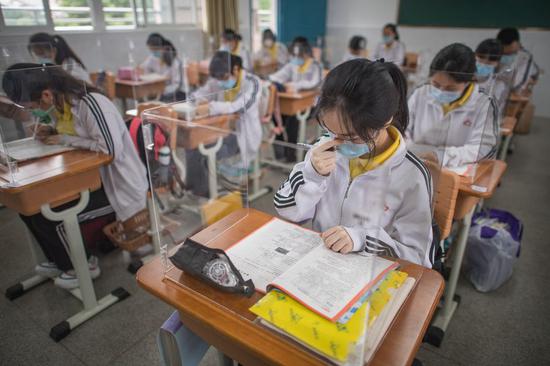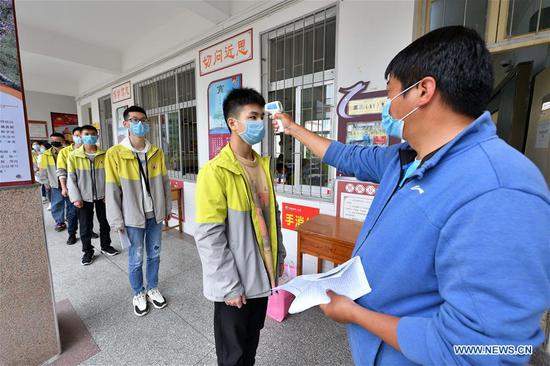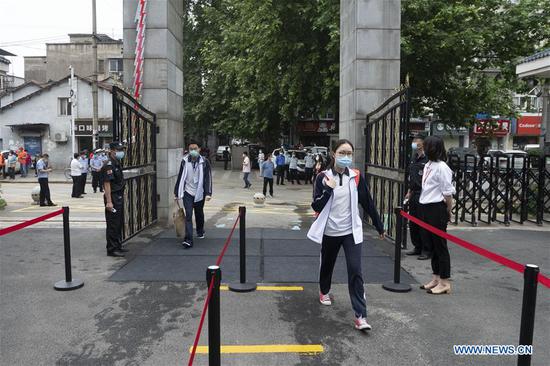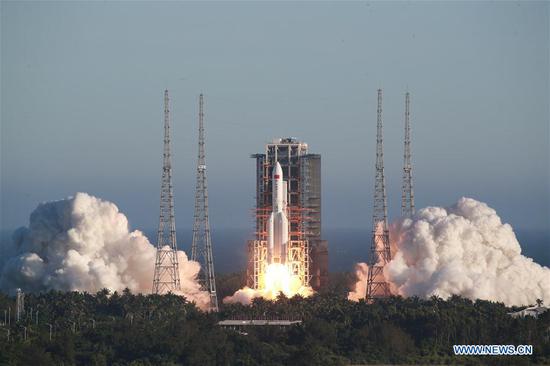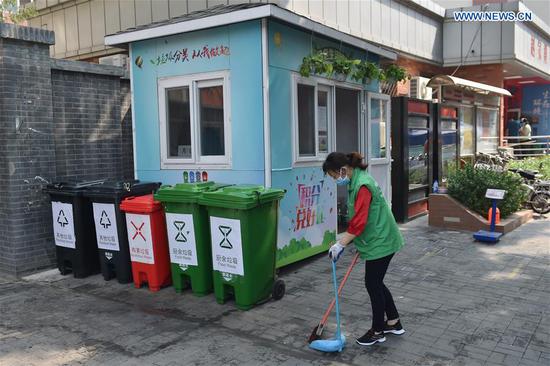China's exports rose unexpectedly by 3.5 percent in U.S. dollar terms for the month of April as factories restarted production and restaurants reopened following easing coronavirus restrictions. Meanwhile imports fell 14.2 percent, according to customs data on Thursday.
Economists in a Reuters poll estimated both imports and exports would suffer double-digit drops in April after a tentative recovery in March since the COVID-19 pandemic slashed global demand and disrupted supply chains.
The pool expected exports to have fallen 15.7 percent while imports were expected to have fallen 11.2 percent, which all worse than the final outcomes released by the General Administration of Customs.
In March, China's exports dropped 6.6 percent from a year ago, and imports edged down 0.9 percent in the same period.
The country's trade surplus was enlarged by the growing exports and falling imports. The figure in April stood at 45.34 billion U.S. dollars, compared to the poll's forecast of 6.35 billion U.S. dollars. In March, the number was 19.9 billion U.S. dollars.
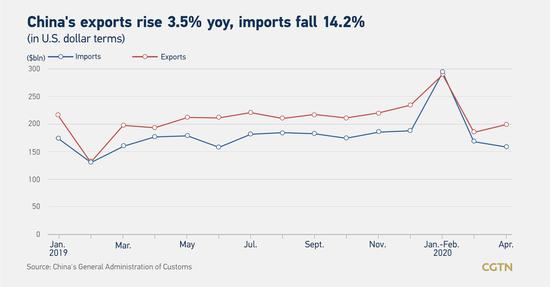
"Trade numbers in April exceeded market expectations by going upwards, which reflects the resistance of China's foreign trade." Liu Chunsheng, an associate professor at the Central University of Finance and Economics told CGTN.
Even under the effect of the COVID-19 pandemic, the world still needs China's products, Liu suggested. He believed that how Chinese companies confronted the COVID-19 in the last couple of months is a crucial reason highlighting the foreign trade data.
"Chinese foreign trade companies have taken a series of measures to reduce their losses," said Liu, adding that a lot of companies have switched to producing medical supplies, protective equipment and other medical products.
Last Friday, customs said that China's medical supply exports increased significantly from March 1 to April 30.
"Since April, China's exports of anti-epidemic medical supply have shown a significant increase," said the authority. "The average daily export value has increased from about one billion yuan in the early days to more than three billion yuan in recent days."
Liu told CGTN these medical supplies exports have played an important role to the substantial recovery of foreign trade.
Read more: Chinese ventilator manufacturers ramp up production in global battle against COVID-19 pandemic
ASEAN and Europe up, U.S. down
In the first four months, customs data shows that China's trade volume with ASEAN and European countries, as the first and second largest trading partner of China, have increased 11.8 and nine percent respectively compared to last year. However, the country's third largest trading partner the United States has seen a 11.2 drop in trade with China year-on-year, including a 26.8 percent drop in exports to China.
"Alarmed by the China- U.S. trade war, rather than relying on a single market, China's foreign trade companies have paid a lot of effort in market diversification, which has reflected in the rise of import and export with ASEAN countries and countries in the network of the Belt and Road Initiative," Liu said.
In the first four months of this year, China's total import and export value of goods reached 9.07 trillion yuan (1.28 trillion U.S. dollars), among which 43.2 percent was conducted by private enterprises.
In order to lower financing costs for companies hit by the pandemic, China has announced a host of fiscal measures, ranging from tax cuts to special bonds, in early April, the country's central bank said that it will inject an extra 100 billion yuan (14.19 billion U.S. dollars) through the liquidity tools.
The one-year medium-term lending facility (MLF) loans to financial institutions was lowed to 2.95 percent in April, while the country's benchmark loan prime rate (LPR) was also cuts to 3.85 percent.
The monetary policy may provide appropriate relief in the future, as the epidemic has hit foreign trade hard, said Zhang Xu, chief analyst for fixed income from Everbright Securities. "However, we believe that such relief policies will most likely be structural and direct, which can prevent liquidity accumulation in the banking system," he continued.
"The relief measures for import and export enterprises should not rely solely on monetary policy. In fact, some fiscal policies and industrial policies are more effective in this regard," Zhang told CGTN.
Still a long way to go
As the daily number of new coronavirus cases slowed dramatically compared to February, when the pandemic was at its peak in China, the country's businesses are gradually back on track and most people have returned to work.
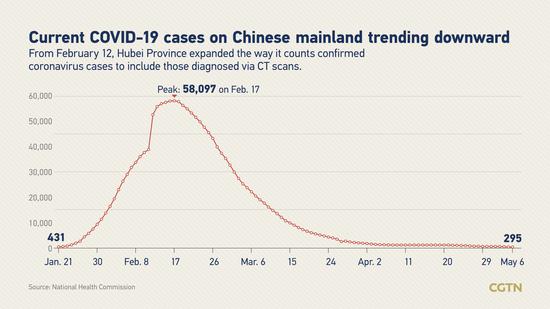
However, new coronavirus cases are yet to completely stop. According to the latest statistics released by Johns Hopkins University, confirmed COVID-19 cases have exceeded 3.7 million globally, with the death toll surpassing 260,000.
Considering the global situation, Liu predicted China's foreign trade will gradually recover to what it was from the third quarter this year.















